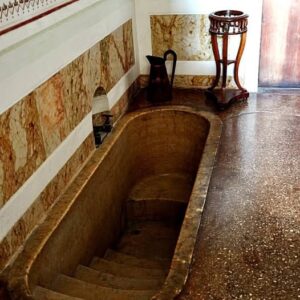The Battle of Visby, a gripping medieval confrontation near the town of Visby on Gotland Island, Sweden, stands as a haunting testament to the brutal realities of warfare in ancient times. This intense clash between the local Gotlanders and the invading Danish forces left a profound mark on the archaeological landscape, revealing a scene of unimaginable horror and sacrifice.
The remnants of this harrowing battle tell a grim tale of mutilated bones, skeletons donned in chainmail and armor, and shattered skulls—many still bearing witness to the lethal impact of arrows and blades. To witness such carnage is to glimpse into the unfathomable suffering endured by those caught in the throes of this violent conflict.

The recent discovery of an arrow-impaled skull at the Battle of Visby site sends chills down the spine, offering a stark reminder of the horrors that unfolded on that fateful day. Such findings provide a somber glimpse into the human toll exacted by medieval warfare, a stark contrast to the romanticized portrayals often seen in popular culture.
The archaeological evidence paints a vivid and unsettling picture of the ferocity and devastation that characterized the clash between the Gotlanders and the Danes. It serves as a poignant reminder of the sacrifices made and lives lost in the pursuit of power and control during that tumultuous era.
As we reflect on the echoes of this bloodstained past, we are compelled to confront the grim realities of history, to acknowledge the profound impact of such conflicts on the lives of those who stood on the front lines. The Battle of Visby stands as a testament to the resilience and tragedy of the human spirit, a poignant reminder of the cost of war and the enduring legacy it leaves behind for future generations to uncover and contemplate.





